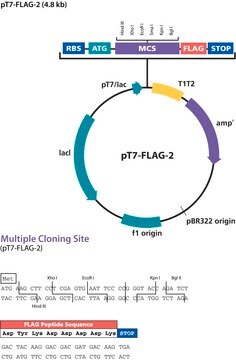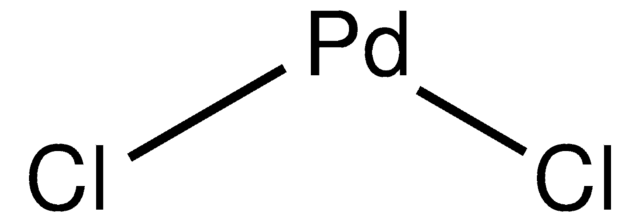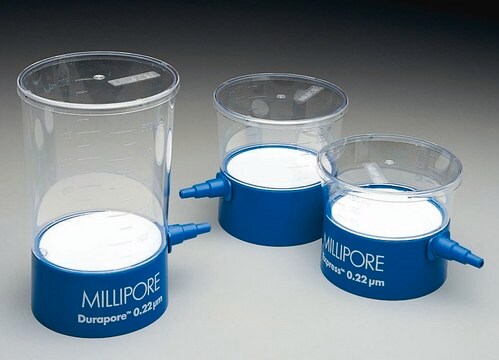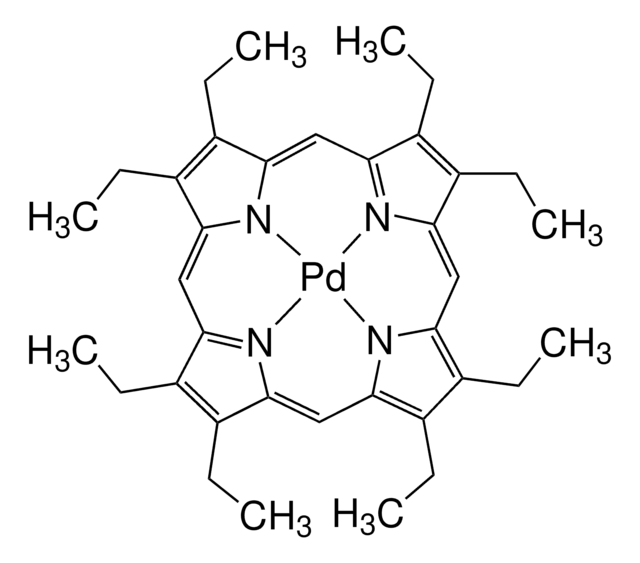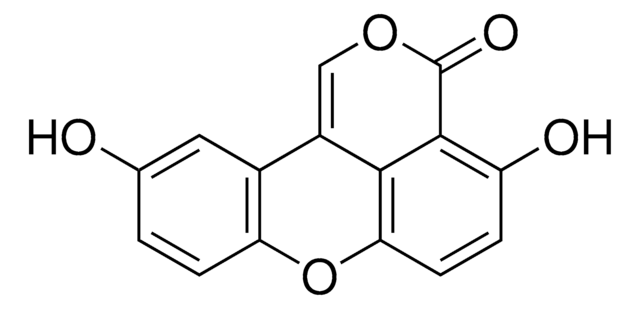OGS2828
PSF-OXB20-NH2-FLAG®-6HIS-EKT - N-TERMINAL FLAG® AND 6 HIS DUAL TAG BACTERIAL PLASMID
plasmid vector for molecular cloning
Synonyme(s) :
cloning vector, expression vector, molecular cloning vector, plasmid, plasmid vector, snapfast vector, vector
About This Item
Produits recommandés
Produit recombinant
expressed in E. coli
Étiquette/Marqueur
6-His tagged
FLAG® tagged
Forme
buffered aqueous solution
Poids mol.
size 4991 bp
Sélection de bactéries
kanamycin
Origine de la réplication
pUC (500 copies)
Clivage des peptides
EKT
Localisation du marqueur peptidique
N-terminal
Promoteur
Promoter name: OXB20
Promoter activity: constitutive
Promoter type: bacterial
Gène reporter
none
Conditions d'expédition
ambient
Température de stockage
−20°C
Description générale
About the Peptide Tag:This plasmid contains an n-terminal Hexa-Histidine (6His) affinity tag that can be fused to a gene of interest to allow protein detection and/or purification. The sequence of the tag is: HHHHHH. This plasmid also contains a secondary Flag protein tag. The sequence of this tag is: DYKDDDDKWe provide a range of dual peptide tag plasmids. This is because some peptide tags provide specific biological properties (e. g., small molecule affinity new epitopes solubility or protein secretion) that are not provided by others.
About the Cleavage Tag: This plasmid also encodes a protease cleavage site that is designed to be positioned between your gene of interest and the tag to allow the removal of the tag following protein purification or isolation. This plasmid contains a EKT cleavage tag. The protein sequence of the cleavage tag is: DDDDK. Enterokinase (EKT) protease cleaves after the Lysine residue. It can cleave at other basic residues but this is dependent on protein confirmation. If a proline follows the site it will not cut. None of our products contain a proline after the site.
Promoter Expression Level: This plasmid contains a constitutive bacterial promoter that does not require induction. It is the strongest bacterial promoter we sell and this can cause solubility and expression problems with some proteins. We also offer a range of other bacterial promoters that are compatible with this plasmid and are available on request.
Séquence
Remarque sur l'analyse
Informations légales
Produit(s) apparenté(s)
Code de la classe de stockage
12 - Non Combustible Liquids
Point d'éclair (°F)
Not applicable
Point d'éclair (°C)
Not applicable
Certificats d'analyse (COA)
Recherchez un Certificats d'analyse (COA) en saisissant le numéro de lot du produit. Les numéros de lot figurent sur l'étiquette du produit après les mots "Lot" ou "Batch".
Déjà en possession de ce produit ?
Retrouvez la documentation relative aux produits que vous avez récemment achetés dans la Bibliothèque de documents.
Articles
Learn more about relevant restriction site functions in the SnapFast™ plasmid system. All DNA sections are pre-screened, and where possible modified, to remove any of the restriction sites found within the core SnapFast plasmids to maintain their flexibility.
A range of forward and reverse sequencing primers that allow you to sequence any insert that you make into a particular position within any plasmid. Where possible, the binding sites for each of these primers is conserved.
Our plasmids are composed of both a core vector backbone and a series of DNA components. Our plasmid platform is all built around the same core backbone, which means that the DNA components within each plasmids can be interchanged into each other.
Protocoles
Sigma-Aldrich presents a technical article to help you choose the right SnapFast™ vector to meet your needs.
Notre équipe de scientifiques dispose d'une expérience dans tous les secteurs de la recherche, notamment en sciences de la vie, science des matériaux, synthèse chimique, chromatographie, analyse et dans de nombreux autres domaines..
Contacter notre Service technique